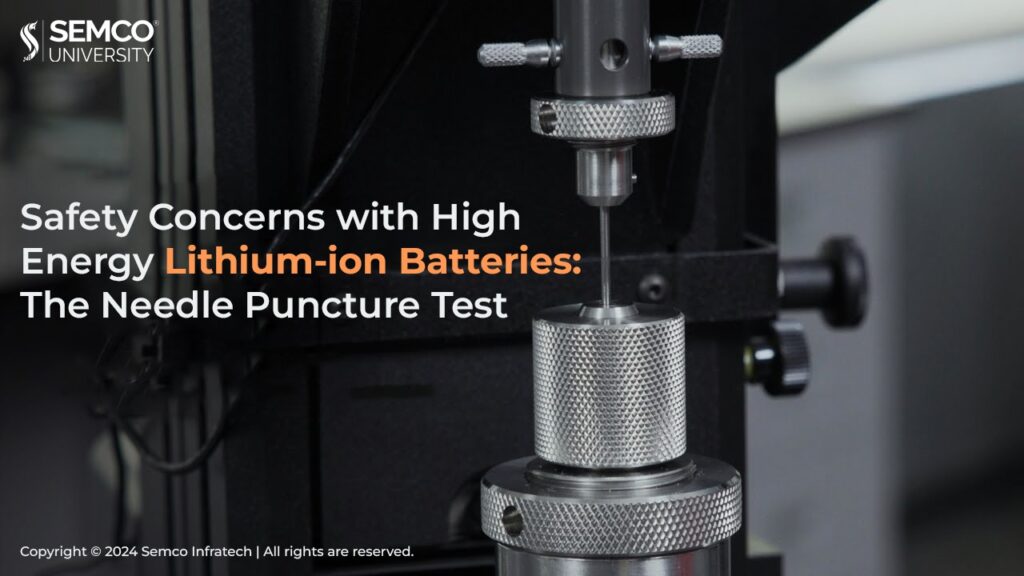Rising Concerns:
Lithium-ion batteries with high energy density are powering our portable devices and electric vehicles, but with this advancement come potential safety risks like fire hazards. Recent incidents of fires in electronic devices and electric vehicles have highlighted these concerns.
The Needle Puncture Test: Assessing Battery Safety
The needle puncture test evaluates a battery’s safety performance by simulating a puncture with a controlled force. This test is a standard part of battery safety assessments in various regions, and it helps determine if a punctured battery will ignite or explode.
Failure Mechanisms:
- Internal Short Circuit: When a needle pierces the battery, it can create a short circuit between the positive and negative electrodes, similar to an external short. This can lead to melting of the current collectors due to the high current flow.
- Electrode-Separator Short Circuit: A puncture can cause a short circuit between the positive electrode and the separator. This can trigger a reaction between the electrode material and electrolyte, leading to thermal runaway and fire.
- Severity of Short Circuits: The severity of a puncture-induced short circuit depends on the location. A short between the positive electrode and the negative current collector can cause a violent reaction, while a short between the separators might not cause a significant temperature rise.
The Physics of Puncture:
- Discharge and Heat Generation: As the needle penetrates the battery, it creates a path for electrons to flow from the negative electrode to the positive electrode. This rapid discharge causes a drop in voltage and generates significant heat at the contact points between the needle and the electrodes.
- Competing Reactions: The high temperatures can trigger two competing reactions: 1) Melting of the electrode foils, which disconnects the internal circuit, or 2) Shrinking of the separator, leading to a larger short circuit and thermal runaway.
Factors Affecting Puncture Test Results:
- Needle Speed: While a very fast puncture might not significantly impact the test, a slow puncture can worsen safety risks.
- Needle Penetration Depth: Deeper penetration leads to higher temperatures, more severe short circuits, and a greater chance of fire.
- Acupuncture Location: Puncturing an area with less active material allows for faster heat dissipation and a higher chance of the battery surviving the test.
- State of Charge (SOC): A higher state of charge (more stored energy) increases the risk of battery failure during the test.
- Needle Diameter: A larger diameter needle creates a larger contact area and lower short-circuit resistance, leading to a faster temperature rise. However, it may also improve heat transfer.
- Needle Angle: The angle of puncture (30° or 90°) has minimal impact on the test results.
- Needle Material: Conductive needles like copper pose a higher short-circuit risk compared to steel or plastic needles, which offer some insulation.

